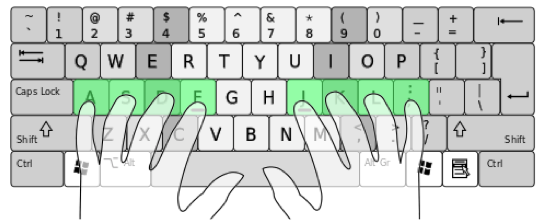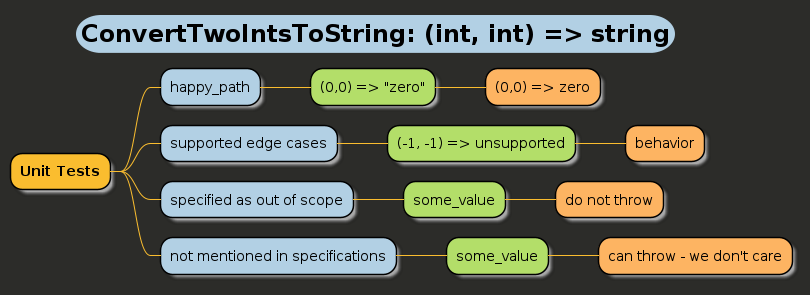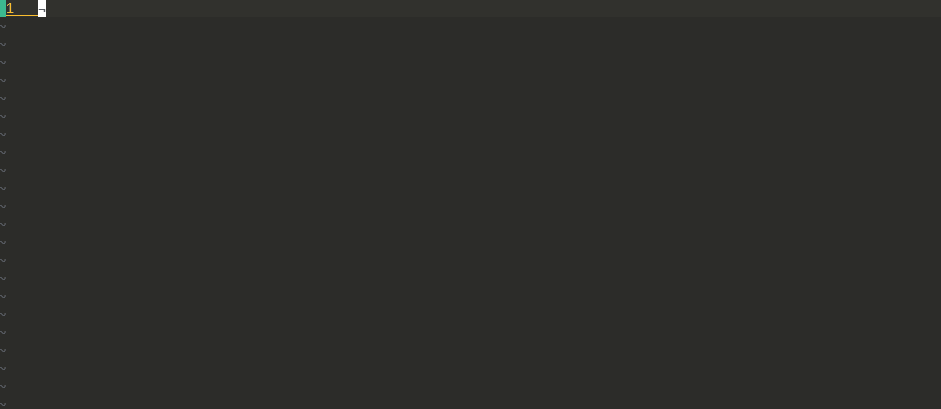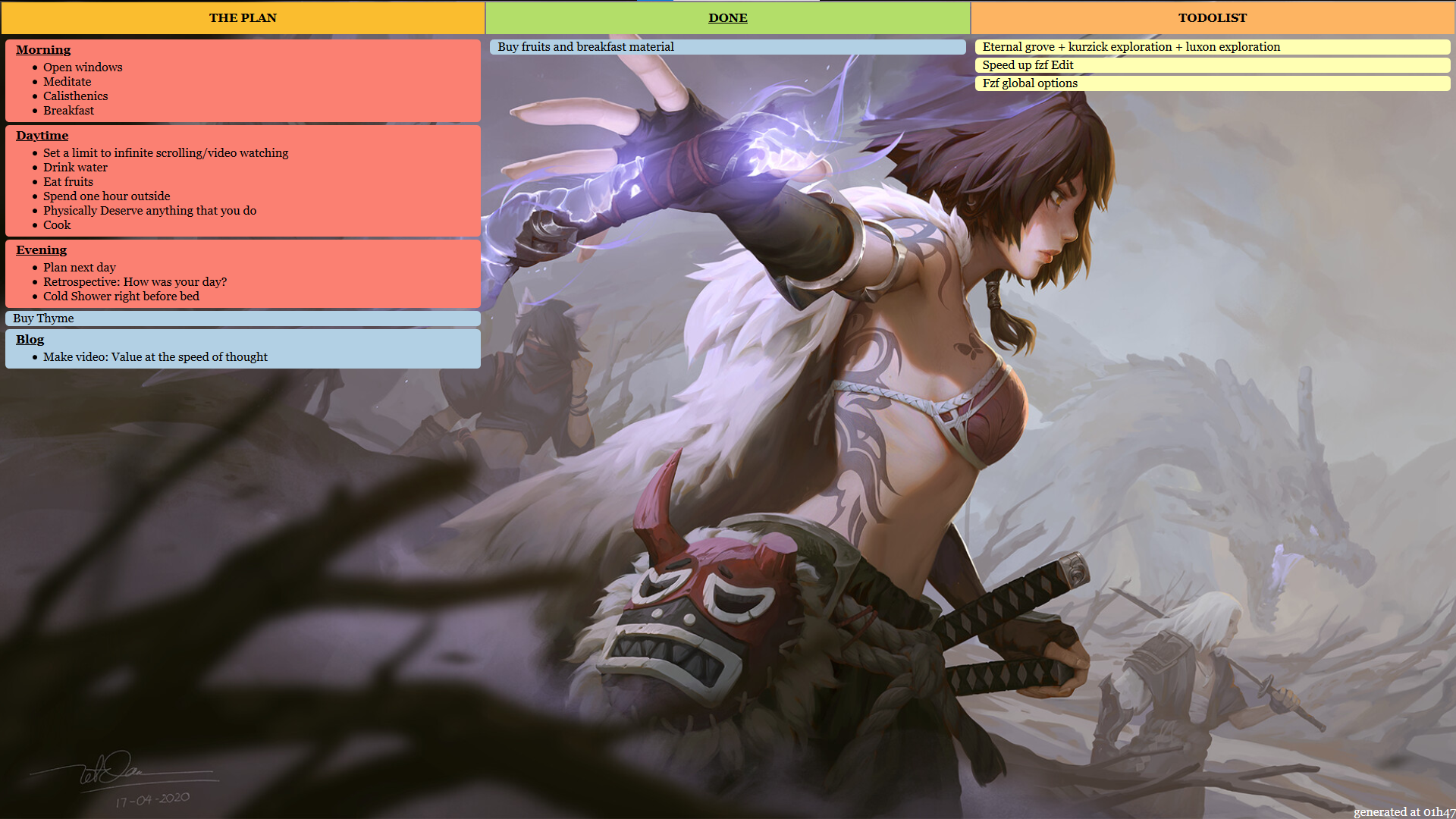03 November 2020 - Workflow Complements
Diagrams. Notes. Checklists. Templates. Snippets. Todolists. Timeboxing. Smaller commits. Macros. The list goes on and on. These help you provide more value. Do you get the best value from them?
Hi!
Even the smallest changes in our daily routine can create incredible ripple effects that expand our vision of what is possible.
— Charles F. Glassman
I am a very visual person. I understand information better when it is presented with a visual structure.
Also, I don’t like losing time on something I already solved in the past.
So I acted on that and adapted my workflow accordingly.
Diagrams
Drawing diagrams. We all admit their values. But. It requires a tool we aren’t really used to, hours spent thinking in a way they’re not used to either, and all that for producing value they don’t always care to produce. In other words: producing a diagram is an event.
And like all events (washing dishes, deploying your software to production, writing integration tests… cleaning your fridge?), if we did them more regularly, they would become non-events: something easy and quick to do, practical, and valuable.
I personally find that diagrams help me understand, they help me think, and they help me focus. To me, they are a way of taking notes with the whole “A picture is worth a thousand words” added value.
But if I was to fire up a new window or create a new tab in my web browser in order to use them, it would just not be cost-efficient at all in terms of focus.
So how do I do?
The answer:
- plantuml’s cli interface
- a text file representing a diagram
- a keyboard mapping to trigger the diagram generation in the background as a png file
- a web browser to display the diagram after it’s generated.
Let me show you.
Diagram generation on-the-go from my text editor:
That image was generated from the following text file:
@startmindmap
title ConvertTwoIntsToString: (int, int) => string
* Unit Tests
** happy_path
*** (0,0) => "zero"
**** (0,0) => zero
** supported edge cases
*** (-1, -1) => unsupported
**** behavior
** specified as out of scope
*** some_value
**** do not throw
** not mentioned in specifications
*** some_value
**** can throw - we don't care
@endmindmap
'https://plantuml.com/fr/mindmap-diagram
As you can see, I’m using it to generate a sort of checklist that helps me think more rigorously (about unit tests, in this case)
That being said, that text file looks long to write. I must have lost a lot of time/focus writing it!
Or have I?
Snippets
Snippets are a common way of generating text with placeholders for the parts you want to customize.
A gif is worth a thousand words.
I’m designing at the same time as I’m writing. I basically use the snippet as a thinking assistant!
But how easy is it to create your own snippets?
On Visual Studio, each snippet is a complete xml file with a heavy syntax, and getting to their location is quite painful. We are once again poking at the notion of event.
<Snippet>
<Code Language="Plantuml">
<![CDATA[@startmindmap
title $Method$: ($Parameters$) => $Return$
* Unit Tests
** happy_path
*** $HappyPathInput$
**** $HappyPathInput1$
$OtherHappyPaths$
** supported edge cases
*** $SupportedEdgeCaseInput$
**** $SupportedEdgeCaseBehavior$
** specified as out of scope
*** $OutOfScopeInput$
**** $OutOfScopeBehavior$
** not mentioned in specifications
*** $UnspecifiedInput$
**** $UnspecifiedBehavior$
@endmindmap
'https://plantuml.com/fr/mindmap-diagram]]>
</Code>
<Declarations>
<Literal>
<ID>Method</ID>
<Default>MyMethod</Default>
</Literal>
<Literal>
<ID>Parameters</ID>
<Default>string</Default>
</Literal>
<Literal>
<ID>Return</ID>
<Default>string</Default>
</Literal>
<Literal>
<ID>HappyPathInput</ID>
<Default>acceptance_test</Default>
</Literal>
<Literal>
<ID>HappyPathInput1</ID>
<Default>first_increment</Default>
</Literal>
<Literal>
<ID>OtherHappyPaths</ID>
<Default>first_increment</Default>
</Literal>
<Literal>
<ID>SupportedEdgeCaseInput</ID>
<Default>some_value</Default>
</Literal>
<Literal>
<ID>SupportedEdgeCaseBehavior</ID>
<Default>behavior</Default>
</Literal>
<Literal>
<ID>OutOfScopeInput</ID>
<Default>some_value</Default>
</Literal>
<Literal>
<ID>OutOfScopeBehavior</ID>
<Default>behavior</Default>
</Literal>
<Literal>
<ID>UnspecifiedInput</ID>
<Default>some_value</Default>
</Literal>
<Literal>
<ID>UnspecifiedBehavior</ID>
<Default>can throw - we don't care</Default>
</Literal>
</Declarations>
</Snippet>
That doesn’t inspire you to create snippets on Visual Studio, does it?
Vim’s snippet plugin UltiSnips lets you edit your snippets much more easily:
- one file contains all the snippets for each file type
- you instantly access it from a keyboard mapping of your choice
- the syntax is dead simple:
snippet ut "unit test listing" b
@startmindmap
title ${1:MyMethod}: (${2:string}) => ${3:string}
* Unit Tests
** happy_path
*** ${4:acceptance_test}
**** ${5:first_increment}
$6
** supported edge cases
*** ${7:some_value}
**** ${8:behavior}
** specified as out of scope
*** ${9:some_value}
**** ${10:do not throw}
** not mentioned in specifications
*** ${11:some_value}
**** ${0:can throw - we don't care}
@endmindmap
'https://plantuml.com/fr/mindmap-diagram
endsnippet
Now, integrating snippet creation into your workflow sounds manageable, doesn’t it?
It suddenly became a non-event.
Every time I compare Visual Studio’s snippets with vim’s (or vscode’s) snippets, it reminds me that a huge part of the value of a tool is in its ability to go along with my workflow. In fact, had I stayed on Visual Studio, I would never have thought of making my own snippets!
Todolist & smaller commits
For me, planning what I expect to be done at the end of the day is an important part it: it gives me a sense of direction, and boundaries to help me chose my trade-offs between thinking and producing.
Additionally, I like to measure my productivity through my commits.
From my perspective, Commits are value.
For that reason, I want to commit as soon as I made a change in the code source that compiles and passes the unit tests.
This is my commit workflow:
| # | Steps |
|---|---|
| 1 | Edit code |
| 2 | Compile |
| 3 | If Compilation was OK, Run tests |
| 4 | If Test Runs were OK, Commit |
| … | Rinse and repeat |
I used to try tokeep in mind to commit more often. However, oftentimes I would forget, inspired by the incentive to move on.
For that reason, I made it so that every time my solution is building, it automatically runs the tests afterwards and then displays a “commit screen” if everything was green.
That way, my workflow commands my habits and I don’t rely on my fallible sense of discipline anymore.
Below, my “dashboard” screen inside vim.

You can see at the top an interactive git status split (provided by vim’s excellent vim-fugitive plugin), some space for displaying file diffs, then three plain files:
| File | Description |
|---|---|
| todo | my todolist |
| done | things I’ve done recently |
| achievements | things I should feel good about |
I would use that screen to commit my changes, update my todolist, and acknowledge that I made progress.
Moving things on my todo list should always be a moment of celebration. However, celebrating cannot be all black and white. Celebration means colors, joy and wellness! For that precise reason, I build a HTML file from the content of these files and display it in my web browser:
Looking great!
And that’s how I turned each commit into a small celebration. Small, but important!
:smile
oooo$$$$$$$$$$$$oooo
oo$$$$$$$$$$$$$$$$$$$$$$$$o
oo$$$$$$$$$$$$$$$$$$$$$$$$$$$$$$o o$ $$ o$
o $ oo o$$$$$$$$$$$$$$$$$$$$$$$$$$$$$$$$$$$$o $$ $$ $$o$
oo $ $ "$ o$$$$$$$$$ $$$$$$$$$$$$$ $$$$$$$$$o $$$o$$o$
"$$$$$$o$ o$$$$$$$$$ $$$$$$$$$$$ $$$$$$$$$$o $$$$$$$$
$$$$$$$ $$$$$$$$$$$ $$$$$$$$$$$ $$$$$$$$$$$$$$$$$$$$$$$
$$$$$$$$$$$$$$$$$$$$$$$ $$$$$$$$$$$$$ $$$$$$$$$$$$$$ """$$$
"$$$""""$$$$$$$$$$$$$$$$$$$$$$$$$$$$$$$$$$$$$$$$$$$$$$$$$ "$$$
$$$ o$$$$$$$$$$$$$$$$$$$$$$$$$$$$$$$$$$$$$$$$$$$$$$$$$$ "$$$o
o$$" $$$$$$$$$$$$$$$$$$$$$$$$$$$$$$$$$$$$$$$$$$$$$$$$$$$ $$$o
$$$ $$$$$$$$$$$$$$$$$$$$$$$$$$$$$$$$$$$$$$$$$$$$$" "$$$$$$ooooo$$$$o
o$$$oooo$$$$$ $$$$$$$$$$$$$$$$$$$$$$$$$$$$$$$$$$$$$ o$$$$$$$$$$$$$$$$$
$$$$$$$$"$$$$ $$$$$$$$$$$$$$$$$$$$$$$$$$$$$$$$$$ $$$$""""""""
"""" $$$$ "$$$$$$$$$$$$$$$$$$$$$$$$$$$$" o$$$
"$$$o """$$$$$$$$$$$$$$$$$$"$$" $$$
$$$o "$$""$$$$$$"""" o$$$
$$$$o o$$$"
"$$$$o o$$$$$$o"$$$$o o$$$$
"$$$$$oo ""$$$$o$$$$$o o$$$$""
""$$$$$oooo "$$$o$$$$$$$$$"""
""$$$$$$$oo $$$$$$$$$$
""""$$$$$$$$$$$
$$$$$$$$$$$$
$$$$$$$$$$"
"$$$""""



